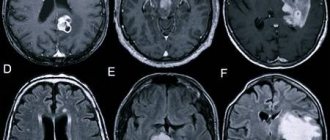Hydrothorax is the accumulation of fluid between the pleural layers - in the pleural cavity. The pleural layers cover the lungs and line the inner surface of the chest. Normally, there is only a few milliliters of liquid between them, which acts as a lubricant.
If the lungs become inflamed, exudate accumulates between the pleural layers. This is a fluid that is released from small blood vessels. Transudate may also appear in the pleural cavity. It accumulates due to impaired blood and lymph circulation.
Unlike exudate, the formation of transudate is not associated with inflammatory processes. Exudate is characteristic of another disease - pleurisy. In this article we will look at transudate accumulation.
The causes of pulmonary hydrothorax can be different. These are heart failure, kidney disease, liver cirrhosis and portal hypertension, pulmonary embolism, etc.
Hydrothorax also accompanies cancer. Most often it develops in cancer of the lung, pleura, breast, and ovaries. In such cases, fluid accumulates in the pleural cavity due to the appearance of metastases on the pleura, which increase the permeability of blood vessels and impair the outflow of lymph.
General information
Hydrothorax refers to non-inflammatory diseases (ICD 10 code for hydrothorax: J94.8), causing the accumulation of transudate in the space of the pleural cavity - a liquid substance of an edematous, stagnant nature, which contains proteins and leukocytes.
Effusion - an accumulation of fluid of more than 10 ml is a pathological condition that can develop as a result of a general disorder of blood circulation with lymph, general dropsy and disruption of various organ systems. The causes may be heart failure due to stagnation of blood from a large circulation, kidney disease due to nephrotic syndrome , cirrhosis of the liver , ascites of various origins, malabsorption syndrome, nutritional dystrophy, peritoneal dialysis , myxedema or mediastinal neoplasms.
Basic principles of treatment
The main task of doctors is not to get rid of the transudate, but to eliminate the cause of its appearance, because hydrothorax is only a consequence of the pathological condition of the body.
You will be interested in: Analogs of "Vasobral": comparison of drugs, composition, instructions for use and reviews
Pumping out fluid from the pleural cavity whenever it appears is not only a useless, but also a dangerous decision. Each subsequent pumping sharply reduces the amount of protein in the body. If concentration does not have time to recover, then the patient experiences serious complications.
The principle of treatment is based on the characteristics of the underlying disease. The following methods are used to pump out transudate:
- thoracentesis (pleurocentesis) is an operation during which a puncture is made in the chest cavity to gain access to the pleural cavity for the purpose of pumping out transudate;
- puncture with aspiration;
- Bülau drainage (procedure for draining the pleural cavity).
It is strictly prohibited to treat hydrothorax of the lung with folk remedies. The wrong choice of treatment can result in serious complications for the patient.
Pathogenesis
Normally, a person of normal weight should produce several milliliters of pleural fluid by the capillaries of the intercostal arteries, which is evacuated by the lymphatic system. It is necessary for the sliding of the pleura to carry out respiratory movements. The pleural cavities are sealed and maintain a pressure below atmospheric pressure, while due to surface tension the lungs remain expanded and adhere to the walls of the chest cavity.
Accumulation can be associated both with hyperproduction and the intake of more fluid, and with a violation of reabsorption processes.
There are several mechanisms for the development of hydrothorax and disruption of blood circulation and lymph flow:
- increased hydrostatic pressure and hyperpermeability of the capillary network in the pulmonary and systemic circulation leads to the accumulation of fluid in the space between the parietal and visceral parts of the pleura around the lungs, this usually occurs with cardiac failure;
- reduced oncotic pressure of the plasma component of the blood is caused by hypoalbuminemia and is most often observed in kidney diseases, myxedema , nutritional dystrophy and malabsorption syndrome;
- increased intra-abdominal pressure with direct intake of fluids coming from the abdominal cavity into the pleural cavity through the pores of the diaphragm against the background of ascites and peritoneal dialysis ;
- impaired local outflow of lymph and blood, which can be caused by mediastinal tumors.
Liver cirrhosis can provoke exudative pleurisy and the development of hypoalbuminemia , and through the entry of ascitic fluid from the abdominal cavity into the pleural cavity.
Mechanism of development of hydrothorax
If there is an accumulation of transudate in the pericardium, then they speak of hydropericardium .
Attention! Hydrothorax, or otherwise exudative pleurisy, can also occur in animals, more often in dogs and horses. Usually caused by general dropsy of the body or cardiovascular failure. When compensatory forces cope, gas exchange is maintained at a completely normal level, but the progression of transudate accumulation can lead to a pronounced disorder of pulmonary and tissue gas exchange, asphyxia , paralysis of the vasomotor center, and as a result, death. It is possible to identify pathological changes after studying clinical signs and conducting X-ray studies, and obtain transudate using a puncture.
Important aspects of treatment
When treating pulmonary hydrothorax, you must follow all doctor's instructions. So, the speed of recovery is affected by several aspects.
Diet control. Nutrition plays an important role in this pathology. The patient should avoid the following products:
- salty food;
- fried, fatty and smoked foods;
- alcoholic products;
- coffee;
- a large amount of liquid.
In case of complications, it is extremely important to maintain bed rest. In this case, the load on the body will be significantly reduced, and recovery will proceed at a rapid pace.
For the same reason, you need to achieve a stable emotional background. Stressful situations and overexertion must be avoided.
Causes
Hydrothorax or exudative pleurisy is a pathological pleural condition caused by various diseases or disorders of organs and systems. These include:
- congestive heart failure and subsequent congestion of the systemic circulation;
- kidney diseases, in particular those causing nephrotic syndrome;
- cirrhosis of the liver;
- ascites;
- malabsorption syndrome;
- nutritional dystrophy;
- peritoneal dialysis;
- myxedema;
- a common type of tumor formation in the mediastinum.
Hydrothorax can significantly complicate the course of common tumor processes, for example, with pleural carcinomatosis , metastatic lesions of the mediastinal lymph nodes , accompanied by impaired lymphatic drainage and concomitant cardiogenic pathologies.
How to treat hydrothorax of the lungs with medications
Drug treatment is also possible, but it is indicated only in cases where the dropsy is small in size.
If the pathology is associated with heart failure, then patients are often prescribed diuretics to naturally remove transudate from the body. Among the most common drugs are Indapamide, Diuretin, Diacarb, Mercuzal, Veroshpiron.
To reduce protein loss in urine, intravenous infusion of protein drugs is added.
If an infection is detected, the course of treatment for pulmonary hydrothorax must include broad-spectrum antibiotics.
Symptoms
The symptoms of hydrothorax may differ depending on the disease that caused its development and the volume of accumulated fluid in the pleural cavity: insignificant or massive - several liters. The main manifestations are a feeling of heaviness on the affected side, as well as symptoms such as:
- Shortness of breath , heaviness in the chest, tachypnea , dry cough and cyanosis , caused by compression of the lungs and displacement of the mediastinal organs, an altered pleural condition reminiscent of respiratory failure .
- Dizziness and headaches.
- Peripheral edema and widespread edema of the subcutaneous tissue (anasarca).
Fever and chest pain are not usually characteristic of hydrothorax. However, you can notice external changes in the chest: an increase in volume in the affected area, smoothing of the intercostal spaces, swelling.
Oncology clinic in Moscow
Oncology clinic in Moscow ¦ THORACOCENTESIS ¦ Drainage of the pleural cavity. Treatment of hydrothorax
Treatment of hydrothorax
Cancer diseases often cause complications, which in themselves worsen the well-being of patients and reduce their quality of life.
One of these adverse side effects is hydrothorax, which limits breathing volume and overall oxygenation of the body.
Fortunately, modern medicine has learned to cope with such pathology.
Doctors at the European Clinic of Surgery and Oncology, thanks to their professional experience and honed skills, quickly neutralize such complications.
Both oncological and general somatic pathologies are treated here, and all causes of hydrothorax are eliminated conservatively or surgically.
| European Oncology Clinic Request for consultation and treatment +7(925)191-50-55 Moscow, Dukhovskoy lane, 22b |
Causes of hydrothorax formation
Hydrothorax is the fluid between the layers of the pleura of non-inflammatory origin. It is sometimes confused with inflammatory fluid in exudative pleurisy resulting from microbial infection.
With hydrothorax, fluid formation is associated with other, non-infectious mechanisms. The main signs of hydrothorax are shortness of breath, cyanosis, chest pain, which decreases if you lie on the side of hydrothorax and intensifies on the opposite side.
With bilateral hydrothorax, the patient prefers to sleep in a sitting position. Visually, smoothing of the intercostal spaces is observed even in a thin person. During auscultation, breathing is not audible in the lower lobes of the lungs, and dullness of percussion sound is also noted there.
In a healthy body, the pleural cavity contains a certain amount of fluid, which facilitates the interaction of the pleural layers during breathing.
Subjectively, this is not felt at all. With hydrothorax, shortness of breath and limited breathing volume develop. This phenomenon can often occur with the development of heart failure in the right side of the heart, when stagnation occurs in the pulmonary circulation.
If we are not talking about a defect of the tricuspid valve, then the most common cause of this situation may be post-infarction cardiosclerosis, when failure first develops in the systemic circle, and then, with the expansion of the right parts of the heart, in the pulmonary circulation.
Treatment of hydrothorax
Treatment of hydrothorax consists primarily of correcting heart failure, stimulating cardiac activity, reducing the load on the heart muscle, improving its metabolism, and correcting blood pressure.
Kidney diseases can be complicated by hydrothorax. This happens with renal amyloidosis, pyelonephritis, glomerulonephritis.
As a result of the development of nephrotic complications, there is a significant loss of protein by the body and the development of renal edema, including “chest dropsy”. Pathogenetic therapy of hydrothorax of renal origin is aimed at treating the underlying disease.
For amyloidosis, hormones and cytostatics are prescribed to reduce the formation of amyloid and, accordingly, damage to the renal glomeruli and tubules. Inflammatory processes are treated with nitrofurans and other “renal” antibiotics. Improve renal blood flow, adjust diet and water balance.
Another cause of edema and hydrothorax may be a decrease in the function of the thyroid gland, which is characterized by fluid retention in the body.
There are primary and secondary hypothyroidism. In the first case, the pathology is localized in the tissue of the thyroid gland itself, and in the second - in the hypothalamic-pituitary system. Accordingly, treatment tactics will differ in both cases.
Tumor processes in the mediastinum very often cause the formation of hydrothorax, resistant to treatment.
The tumor provokes constant production of effusion, sometimes in a very large volume, which leads to severe respiratory failure.
The main mechanism for the formation of fluid in the pleural cavity is compression of the veins in the mediastinum. Etiological and pathogenetic treatment consists of surgical removal of the tumor, the use of radiotherapy and chemotherapy.
Thoracentesis and drainage
With inoperable tumors in the chest and liver, as well as in the case of metastasis, hydrothorax can often recur and not respond to conservative treatment. In the case of an inoperable tumor, the only way to alleviate the patient’s suffering is thoracentesis and drainage of the pleural cavity.
The whole process most often takes place in the treatment room: the patient sits on the table, leaning on the chair in front, with his arm thrown over the other shoulder on the hydrothorox side. A puncture for hydrothorax is made along the posterior axillary projection or midscapular line in the seventh or eighth intercostal space.
For manipulation, a Janet syringe with a long needle up to 10 cm in length is used. The pre-supposed needle entry site is injected with 1% novocaine, and when the anesthesia takes effect, a syringe is taken and led into the soft tissue of the intercostal space. When the syringe sticks into a rib, it is localized along the upper edge of the rib so as not to damage the vessels and nerves. When the needle enters the pleural cavity, it feels like a hole in the void.
Fluid is pumped out from the pleural cavity in several stages. When the syringe is disconnected after the next pumping, the rubber tube is closed with a clamp to prevent air from being sucked in.
The patient's condition should be monitored, since due to a decrease in pressure in the pleural cavity, decompression in the vascular system is possible with a sharp drop in pressure and fainting.
The results of thoracentesis are monitored by chest x-ray. The most common complications from this procedure are pneumothorax, damage to blood vessels, nerves, insufficient removal of fluid from the pleural cavity, and hemothorax.
If, as a result of a puncture, air is detected in the pleural cavity using a pressure gauge, then the pleura is drained. To do this, a small incision is made in the skin at the puncture site, then a trocar is inserted there.
After reaching the pleural cavity, the stylet is removed from the trocar and a drainage tube is inserted in its place, which is located in the pleural cavity at one end and communicates with the external environment at the other.
The guide tube is removed (everything happens very quickly), and the drainage is fixed to the skin with a special suture and connected to the aspiration system, which in the simplest case is a sterile hermetically sealed flask into which two tubes are inserted: one of them is the drainage itself, and the other designed to release air displaced by incoming pleural fluid.
There are also active methods of aspiration, when a water-jet pump is connected to one of the tubes of the flask. The process of liquid extraction is controlled by a pressure gauge.
Installation of a drainage system may be indicated when ascitic fluid re-forms rapidly and requires repeated removal. It is possible to install a drainage with a clamp or a special overlap (valve, tap), which is used inconsistently, but as fluid accumulates in the pleural cavity. After active drainage, complications such as emphysema, bleeding, and infection may occur.
Despite all the risks, drainage of the pleural cavity and thoracentesis significantly improves the well-being of patients and improves their condition. The professional experience of doctors allows in most cases to achieve good clinical results with a minimum of complications.
| European Oncology Clinic Request for consultation and treatment +7(925)191-50-55 Moscow, Dukhovskoy lane, 22b |
| Causes of pleurisy |
| Symptoms of pleurisy |
| Diagnosis of pleurisy in the European clinic |
| Treatment of pleurisy |
| Drainage of the pleural cavity. Treatment of hydrothorax |
+7(925)191-50-55 — European treatment protocols in Moscow
REQUEST TO THE CLINIC
Tests and diagnostics
Hydrothorax can usually be detected by physical examination, with greater attention paid to the area above the fluid concentration. The condition of pleural effusion differs:
- absence or weakening of vocal tremors over the lunge;
- muffledness or the presence of dull percussion sounds with a beveled upper border;
- absence of breathing sounds;
- percussion border of dullness in case of change in the patient's position.
The next stage is an X-ray (including lateroposition) and ultrasound examination, as well as, if necessary, thoracoscopy. In the picture, exudative pleurisy looks like a homogeneous shadow, the liquid has an upper border and shifts when the body is tilted. Ultrasound allows you to detect the accumulation of even a small amount of transudate and allows you to more accurately select the location of the pleural puncture. This procedure is important for diagnostic and treatment purposes. Using pleural puncture, it is possible to determine the nature of the effusion and distinguish it from pleurisy , hemothorax and chylothorax .
To analyze the pleural fluid, it is necessary to carry out general and biochemical tests - simple microscopy, study the density, find out the amount of glucose, protein, LDH, then carry out cytological and microbiological studies using culture and determining the sensitivity of microflora, as well as comprehensive studies for tuberculosis using luminescent microscopy, culture and PCR.
When examining patients, severe heart disease, problems with the kidneys, liver and other pathological changes are discovered that cause hydrothorax.
Localization
This pathological process can occur in several forms, the distinguishing feature being its localization:
- right-sided;
- left-sided hydrothorax of the lung;
- double-sided
The most common occurrence is bilateral hydrothorax. This phenomenon can be explained by the following fact. The presence of an underlying disease causes the accumulation of pleural fluid first in one lung (right or left). The absence of pronounced symptoms most often means the absence of correct treatment, which means that over time a similar process develops in the second lung.
Diet for hydrothorax
Salt-free diet
- Efficiency: 5-10 kg in 13 days
- Time frame: 13 days
- Cost of products: 4500-8000 rubles for 13 days
Important components of the patient’s recovery are: optimization of work and rest regimes, adherence to the rules of a healthy lifestyle, elimination of swelling and normalization of body weight. This can be achieved thanks to:
- giving up bad habits;
- establishing a normal sleep schedule;
- reducing the amount of salt consumed;
- excluding canned, spicy, semi-finished products from the diet;
- normalizing the amount of simple carbohydrates, proteins and fats consumed.
Causes of hydrothorax development
Hydrothorax in the human body can develop for various reasons. The main cause remains the diseases that provoke the development of the disease:
- Mediastinal tumor
- Cirrhosis of the liver
- Congenital or acquired heart pathologies
- Anemia
- Malabsorption
- Kidney failure
- Myxedema
- Chest trauma
Kidney failure can lead to decreased blood volume, resulting in hydrothorax of the lungs. The process can develop against the background of myxedema or with severe protein deficiency. If there is cirrhosis of the liver, the disease develops as a result of the entry of a liquid substance from the abdominal region into the pleural region. Similar processes occur with abdominal hydrops and mediastinal tumors as a result of impaired outflow of blood and lymph. Sometimes the development of pathology can be provoked by impaired metabolism (salt, water and protein).
Diagnosis of hydrothorax
Hydrothorax on x-ray
Examination of the patient consists of identifying the location of fluid accumulation and determining the absence or weakening of breathing in the affected area. Such procedures are carried out using percussion (tapping) and auscultation (listening) methods. Percussion sound is the sound of tapping on different parts. The doctor analyzes these sound vibrations for compliance with the norm. And auscultation is called listening to the sound that is produced during the operation of an organ.
Very often, hydrothorax becomes bilateral and hydropericardium appears, in which fluid accumulates in the pericardial cavity. In addition, ascites, a pathological accumulation of fluid in the abdominal cavity, can form. To make a diagnosis, X-ray examination, ultrasound diagnosis of the pleural cavity and computed tomography are very important.
On x-rays, hydrothorax may appear as a uniform darkening located in the lowest parts of the chest. This darkening can be easily moved when changing poses. Using ultrasound diagnostics (ultrasound), it is possible to identify a pathological accumulation of fluid and approximately determine its volume. In the process of computer research, in addition to fluid, it is possible to detect the causes that caused the development of pathology (tumors, enlarged mediastinal lymph nodes)
Research and analysis
A general blood test is of no diagnostic value due to the absence of changes in this pathology. Only as a result of renal failure, which causes hydrothorax, can anemia develop and ESR increase.
A biochemical blood test reveals abnormalities caused by kidney or liver dysfunction. Blood protein and bilirubin increase. Many other indicators are also changing.
Urine examination shows changes in hydrothorax resulting from impaired renal function. Protein, cylindrical cells, erythrocytes, and leukocytes are detected in the urine. The density of this liquid also increases.
Cytological diagnosis of pleural fluid taken for analysis makes it possible to distinguish the usual form from exudative pleurisy resulting from tumors.
Bacteriological tests are carried out to differentiate this disease from tuberculous pleurisy. The liquid substance is placed in an artificial nutrient medium and examined after some time.
Treatment of hydrothorax
Therapeutic procedures are the basis of treatment. Treatment of hydrothorax is primarily aimed at eliminating the disease that caused hydrothorax of the lungs. Therapy of underlying diseases makes it possible to cure mild hydrothorax, in which the volume of accumulated fluid is insignificant. In such cases, the doctor prescribes drugs with a diuretic effect (diuretics) and medications that improve protein absorption. Pharmacological agents are also used to combat heart failure.
When fluid accumulates in a large volume, the patient develops respiratory failure as the lungs are compressed. In case of such complications, a puncture is prescribed. The main task of this manipulation is the gradual extraction of fluid. During the procedure, a special thick and long needle is inserted into the chest cavity, with the help of which the fluid is sucked out. Next, the substance is analyzed, thereby clarifying the diagnosis.
During manipulations, the patient needs to be in a sitting position. During puncture, local anesthesia is administered. The maximum volume of extracted liquid is up to 1.5 liters. Exceeding the specified volume is very dangerous, as organs are displaced and blood pressure decreases. After the manipulation, the wound formed during the puncture with a needle is closed with sterile material.
By clearing the pleural cavity of fluid, blood circulation is restored and the respiratory process is normalized. In difficult cases, puncture can be performed several times, but this process does not require additional preparation of the patient.
Possible complications caused by suctioning fluid for hydrothorax
Any operation has its disadvantages. Puncture for this pathology is no exception; Some organ dysfunctions are possible. Let's consider possible complications:
- lung puncture;
- liver tissue damage;
- violation of the integrity of the diaphragm;
- intrapleural bleeding;
- air entering the vessels (air embolism).
To reduce the likelihood of such problems, you need to contact qualified specialists to properly treat hydrothorax.
Treatment of the main causes of hydrothorax
Although puncture is a relatively safe and simple procedure that helps treat hydrothorax, doctors may limit the frequency of the procedure or abandon it. Often, specialists limit themselves to conservative methods, since repeated measures are accompanied by loss of protein and deterioration of metabolism.
If hydrothorax occurs due to cirrhosis of the liver, dietary nutrition is prescribed. In this case, it is necessary to limit the consumption of salt and liquid, and the food must contain sufficient protein. In addition, doctors may prescribe diuretics.
If hydrothorax is caused by kidney disease (nephrotic syndrome), then bed rest is prescribed to improve water metabolism. The patient is shown a special diet in which salt intake is reduced or it is completely eliminated from the diet (in case of severe swelling). You also need to drink less fluid. Medicines are used to treat a specific type of primary disease.
In cases where hydrothorax is caused by heart failure, a special diet, normalization of sleep and rest patterns, and elimination of stress are also prescribed. Pharmacological agents are used, such as ACE inhibitors, beta blockers, etc.
If you suspect hydrothorax of the lungs, you should immediately contact a therapist and pulmonologist. To exclude the occurrence of hydrothorax and its complications, it is necessary to promptly treat pathologies that can cause the development of the disease. Before performing a puncture (if the volume of fluid is small), it is best to first, if possible, carry out conservative treatment of the underlying diseases. This often leads to success, i.e. it gives a pronounced therapeutic effect.







